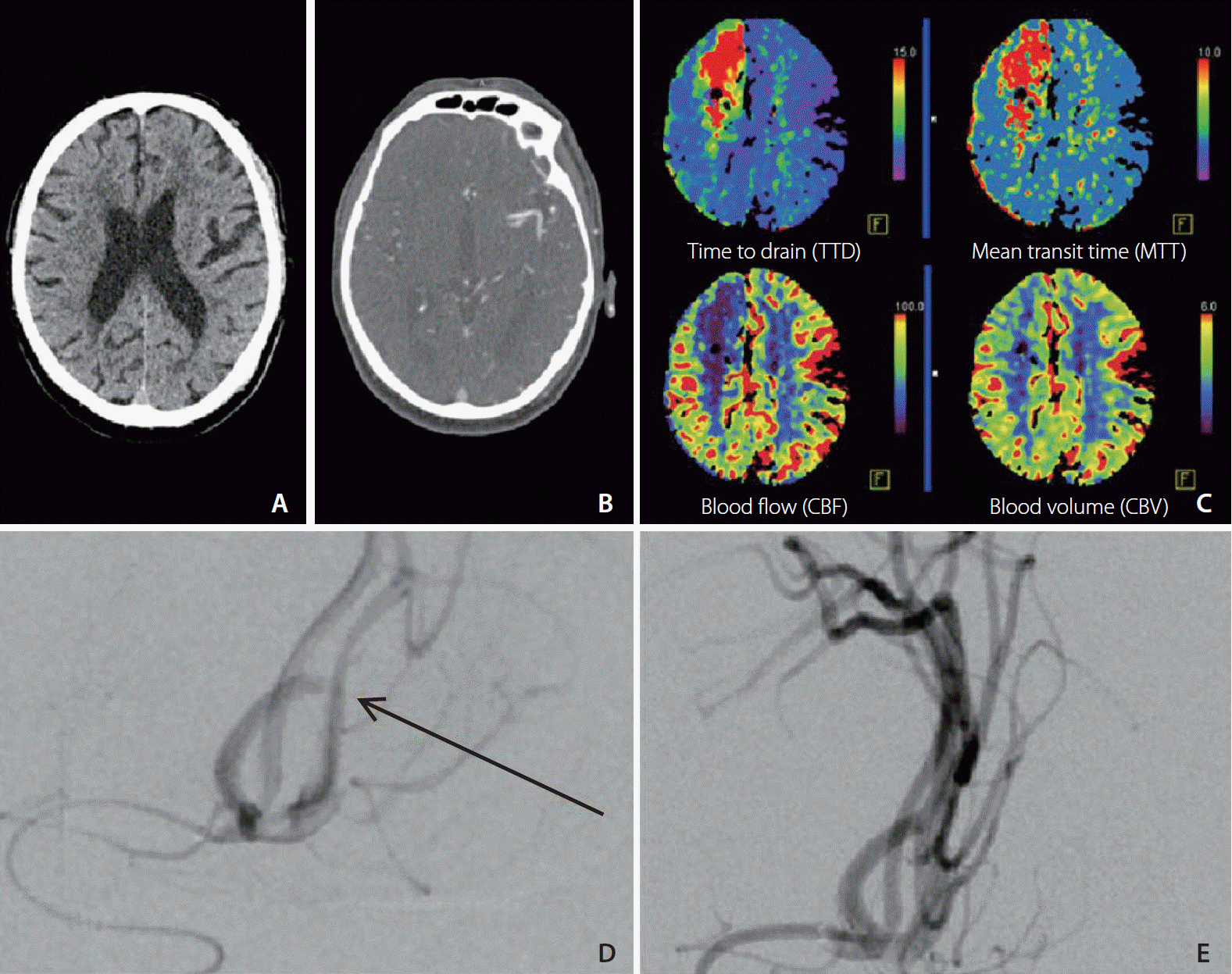1. Tsivgoulis G, Safouris A, Krogias C, Arthur AS, Alexandrov AV. Endovascular reperfusion therapies for acute ischemic stroke: dissecting the evidence. Expert Rev Neurother. 2016; 16:527–534.

2. Pfaff J, Herweh C, Pham M, Schieber S, Ringleb PA, Bendszus M, et al. Mechanical thrombectomy of distal occlusions in the anterior cerebral artery: recanalization rates, periprocedural complications, and clinical outcome. AJNR Am J Neuroradiol. 2016; 37:673–678.

3. Trepel M. Neuroanatomie: struktur und funktion. 5th ed. München: Urban & Fischer;2011. German.
4. Kang SY, Kim JS. Anterior cerebral artery infarction: stroke mechanism and clinical-imaging study in 100 patients. Neurology. 2008; 70(24 Pt 2):2386–2393.

5. Fawcett E, Blachford JV. The circle of Willis: an examination of 700 specimens. J Anat Physiol. 1905; 40(Pt 1):63.
6. Kapoor K, Singh B, Dewan LI. Variations in the configuration of the circle of Willis. Anat Sci Int. 2008; 83:96–106.

7. Ravikanth R, Philip B. Magnetic resonance angiography determined variations in the circle of Willis: analysis of a large series from a single center. Ci Ji Yi Xue Za Zhi. 2019; 31:52–59.

8. Karatas A, Coban G, Cinar C, Oran I, Uz A. Assessment of the circle of Willis with cranial tomography angiography. Med Sci Monit. 2015; 21:2647–2652.

9. Iqbal S. A comprehensive study of the anatomical variations of the circle of Willis in adult human brains. J Clin Diagn Res. 2013; 7:2423–2427.

10. Ringleb PA, Hamann GF, Röther J, Jansen O, Groden C, Veltkamp R. [Therapy of acute ischemic stroke – recanalisation therapy guideline]. Aktuelle Neurol. 2016; 43:82–91. German.
11. Albers GW, Marks MP, Kemp S, Christensen S, Tsai JP, Ortega-Gutierrez S, DEFUSE 3 Investigators, et al. Thrombectomy for stroke at 6 to 16 hours with selection by perfusion imaging. N Engl J Med. 2018; 378:708–718.

12. Nogueira RG, Jadhav AP, Haussen DC, Bonafe A, Budzik RF, Bhuva P, DAWN Trial Investigators, et al. Thrombectomy 6 to 24 hours after stroke with a mismatch between deficit and infarct. N Engl J Med. 2018; 378:11–21.
13. Thomalla G, Simonsen CZ, Boutitie F, Andersen G, Berthezene Y, Cheng B, WAKE-UP Investigators, et al. MRI-guided thrombolysis for stroke with unknown time of onset. N Engl J Med. 2018; 379:611–622.

14. Jones JD, Castanho P, Bazira P, Sanders K. Anatomical variations of the circle of Willis and their prevalence, with a focus on the posterior communicating artery: a literature review and meta-analysis. [published online ahead of print Jul 26, 2020]. Clin Anat. 2020.

15. Sun C, Xv ZD, Yuan ZG, Wang XM, Wang LJ, Liu C. MSCT diagnosis of aneurysms associated with an unusual variant: atypical triplication anterior cerebral artery. Surg Radiol Anat. 2012; 34:777–780.

16. Ureña FM, Ureña JGM, Almeida S, Rabelo NN, da Silva JR, Mandel M, et al. Anterior communicating artery duplication associated with a triplication of anterior cerebral artery - a rare anatomical variation. Surg Neurol Int. 2020; 11:36.

17. Thomalla G, Gerloff C. Acute imaging for evidence-based treatment of ischemic stroke. Curr Opin Neurol. 2019; 32:521–529.

18. Simonsen CZ, Leslie-Mazwi TM, Thomalla G. Which imaging approach should be used for stroke of unknown time of onset? Stroke. 2021; 52:373–380.

19. Becks MJ, Manniesing R, Vister J, Pegge SAH, Steens SCA, van Dijk EJ, et al. Brain CT perfusion improves intracranial vessel occlusion detection on CT angiography. J Neuroradiol. 2019; 46:124–129.






 PDF
PDF Citation
Citation Print
Print



 XML Download
XML Download